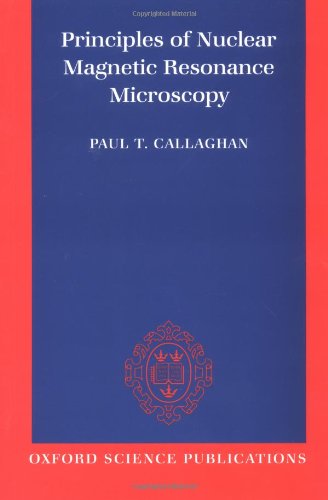Principles of Nuclear Magnetic Resonance Microscopy ebook download
Par mclaughlin lisa le vendredi, juillet 22 2016, 07:22 - Lien permanent
Principles of Nuclear Magnetic Resonance Microscopy. Paul Callaghan

Principles.of.Nuclear.Magnetic.Resonance.Microscopy.pdf
ISBN: 0198539444,9780198539445 | 512 pages | 13 Mb

Principles of Nuclear Magnetic Resonance Microscopy Paul Callaghan
Publisher: Oxford University Press, USA
And how it's Smaller objects, such as viruses, or even molecules, are not visible in a microscope. Researchers increase NMR/MRI sensitivity through hyperpolarization of nuclei in diamond. A new form of NMR technology gives scientists what they need to examine the structure of minute samples. The general principles of the magnetic imaging technique used here have been known for some time. An NMR technique tracks the diffusion of water molecules to obtain micron-scale structural information about a porous material. Callaghan, Principles of Nuclear Magnetic Resonance Microscopy (Clarendon Press, Oxford, 1993)[ Amazon][WorldCat]. It means we can read it out with a microscope. This excellent introduction to the subject explores principles and common themes underlying two key variants of NMR microscopy, and provides many examples of their use. He has published around 220 articles in scientific journals, as well as Principles of Nuclear Magnetic Resonance Microscopy (Oxford University Press, 1994). This work, focusing on cell metabolism, led Damadian to believe that there should be a way to detect cancerous cells through chemical analysis rather than by relying on direct visualization under a microscope. In-cell NMR spectroscopy advances our understanding of . The structure determination of proteins by in-cell NMR spectroscopy opens new avenues to investigate at atomic resolution how proteins participate in biological processes in living systems. Rainer Kimmich, NMR Tomography, and Diffusometry, Relaxometry (Springer-Verlag, Berlin, 1997)[Amazon][WorldCat]. Understand the physical principle of MR imaging 2. Magnetic resonance works by the interaction of electromagnetic radiation with the atomic nuclei in the presence of a magnetic field. MRI is based on the principles of nuclear magnetic resonance (NMR), which is a spectroscopic technique used to obtain microscopic chemical and physical data about molecules. Since light is nothing else than electromagnetic radiation, it seems a straightforward idea to use an approach similar to optical imaging in order to get spatially resolved NMR spectra. NMR Imaging and Its Application to Clinical MedicineThe idea of using a magnetic gradient to introduce spatial information into signals from an NMR spectrometer, which can then be converted to an actu… Hébergé par OverBlog. The basic However, existing techniques either have poor spatial resolution compared to optical microscopy and are hence not generally applicable to imaging of sub-cellular structure (for example, magnetic resonance imaging), or entail operating conditions that preclude . Optical-atomic magnetometers are based on a different principle – one that, curiously, is something like NMR in reverse, except that optical-atomic magnetometers measure whole atoms, not just nuclei.